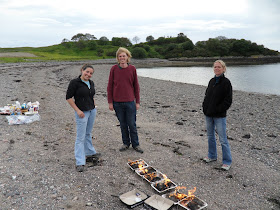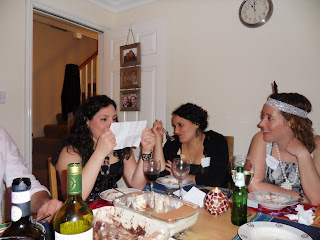Hello,
sorry I haven't been posting since the long lost summer months, yes I am a poor excuse of a blogger! Well in my defense I had no time to do anything...not even the laundry! (as my partner loudly complains).
What I have been up to? well, apart for a short break when my dear sister got married...lab work.
The lab work has been very intense as well as my weekly journey to the British Antarctic Survey (Cambridge) to carry out some specialized samples analysis which, hopefully, will give me some very interesting numbers to discuss in my thesis and show the world (well...whoever wants to read about it).
In the lab I have been finally able to get going with loads of experiments but I had a few problems with my cultures.
FROZEN PLANET http://www.bbc.co.uk/programmes/b00mfl7n
Most of you may have been able to watch the latest David Attenborough (BBC)'s series. The photography is just amazing! I loved every minute of it and that reinforced my desire to discover more about this strange world where animals have been able to thrive in such harsh habitats.
The last episode talked about climate change and, only to be expected, with that sparked a series of responses from critics and skeptics.
In the US they are even going to change the narration and Alec Baldwin's voice will be taped over Sir Attenborough's. They are going to great lengths in order to avoid, what they call, controversy.
The telegraph even dared to publish a rubbish article by this so called "journalist" Christopher Booker, accusing and denigrating the episode saying things like
"By making its coverage so flagrantly one-sided on the environment issue, it has betrayed its statutory duty to report on world events impartially".
Now...to crap reporting there must be a limit. Not once I have heard Sir David saying the words "MAN MADE CLIMATE CHANGE". And I have listened very carefully! He just laid out the truth about our world's changes fair and square. He showed pictures of what it was before and what it is now. What animals were doing and how they are trying to cope now. Some species adapt, some migrate and some, unfortunately, suffer and won't adapt on time.
The press just keeps on dramatizing and lying and so called "journalists" with no qualifications on the topics they choose to discuss, just write without even knowing what they are writing about. I always believed that everyone is entitled to their own opinion, even if I don't agree with that. But the arguments need to have a certain foundation of intelligence before they are exposed to the rest of the world.
After my rant..*cough cough*.
I believe we live in a changing world, I believe we are changing it, damaging it and spoiling it. I believe in science.

check this out: http://www.telegraph.co.uk/earth/environment/climatechange/7221110/Climate-change-sceptics-playing-Russian-roulette-with-planet.html
Thank you all
raffles79





















































